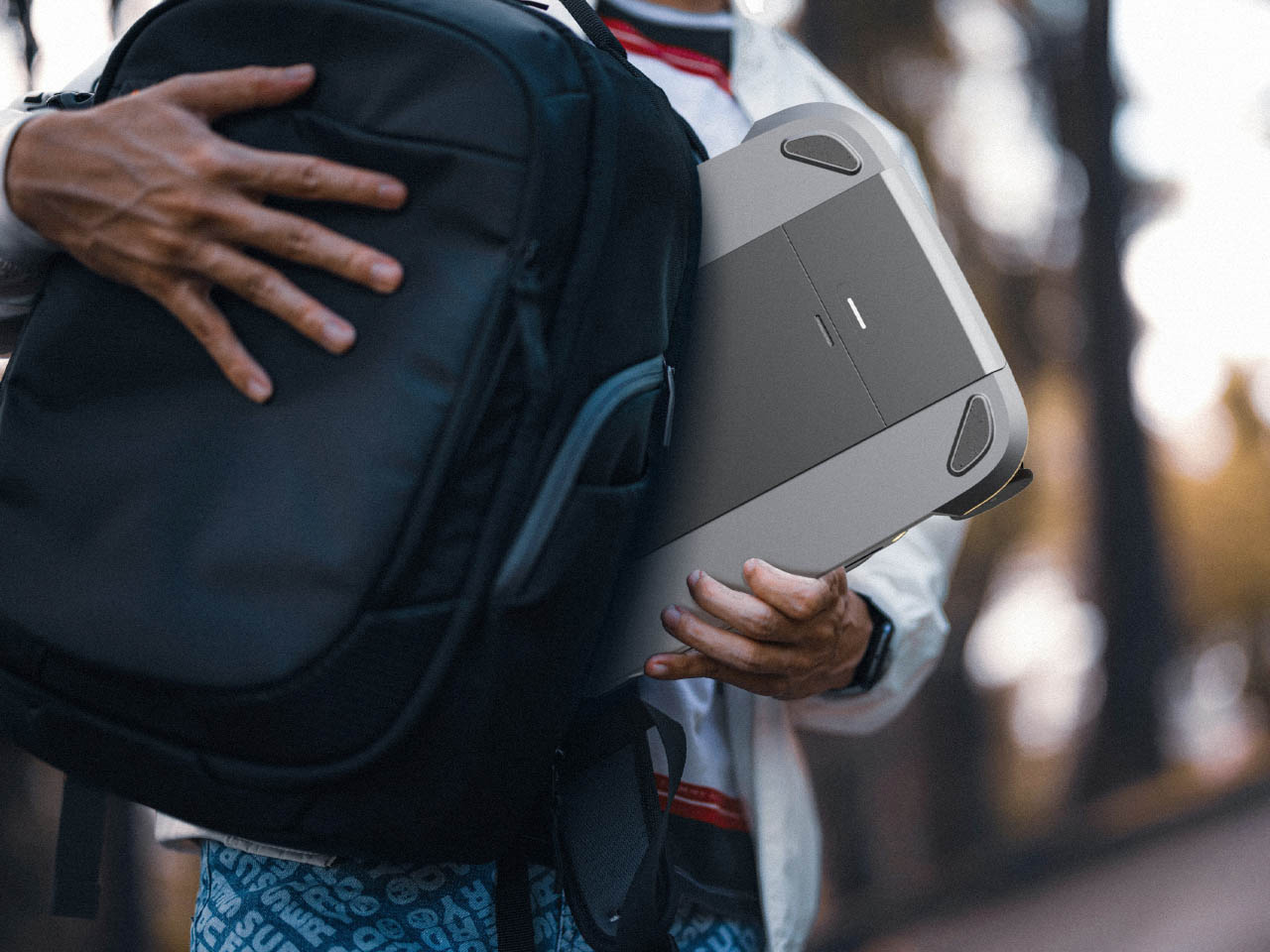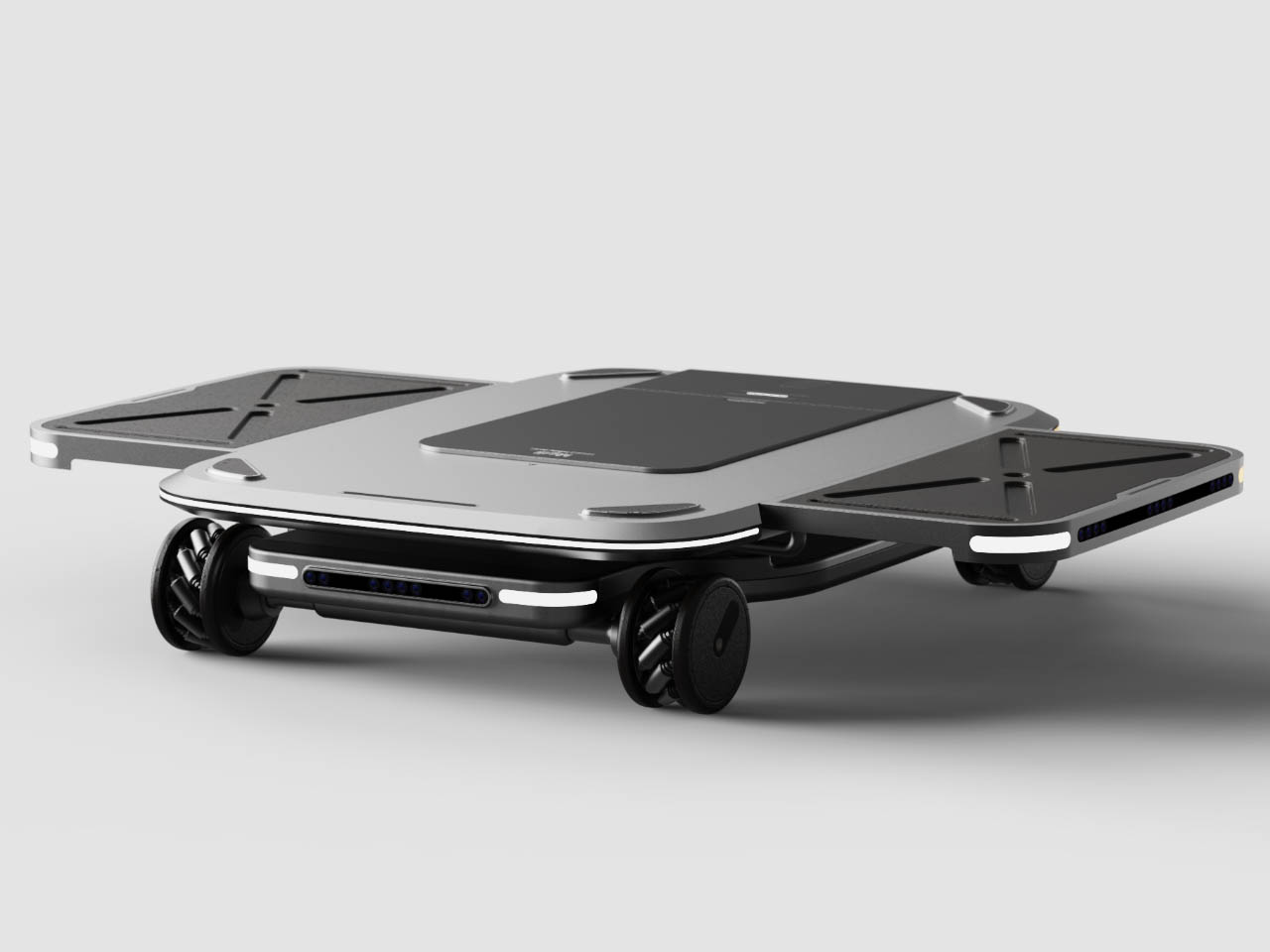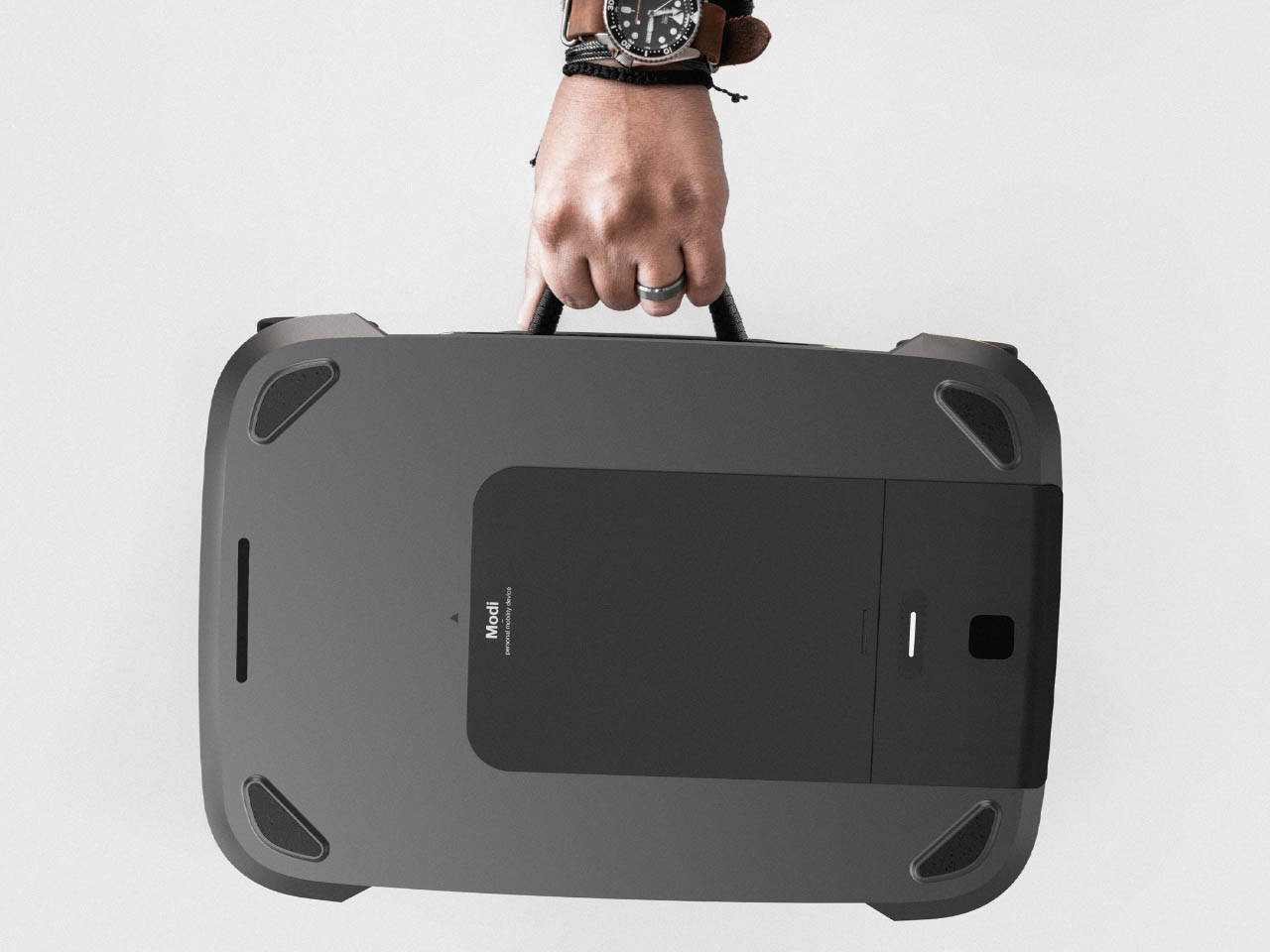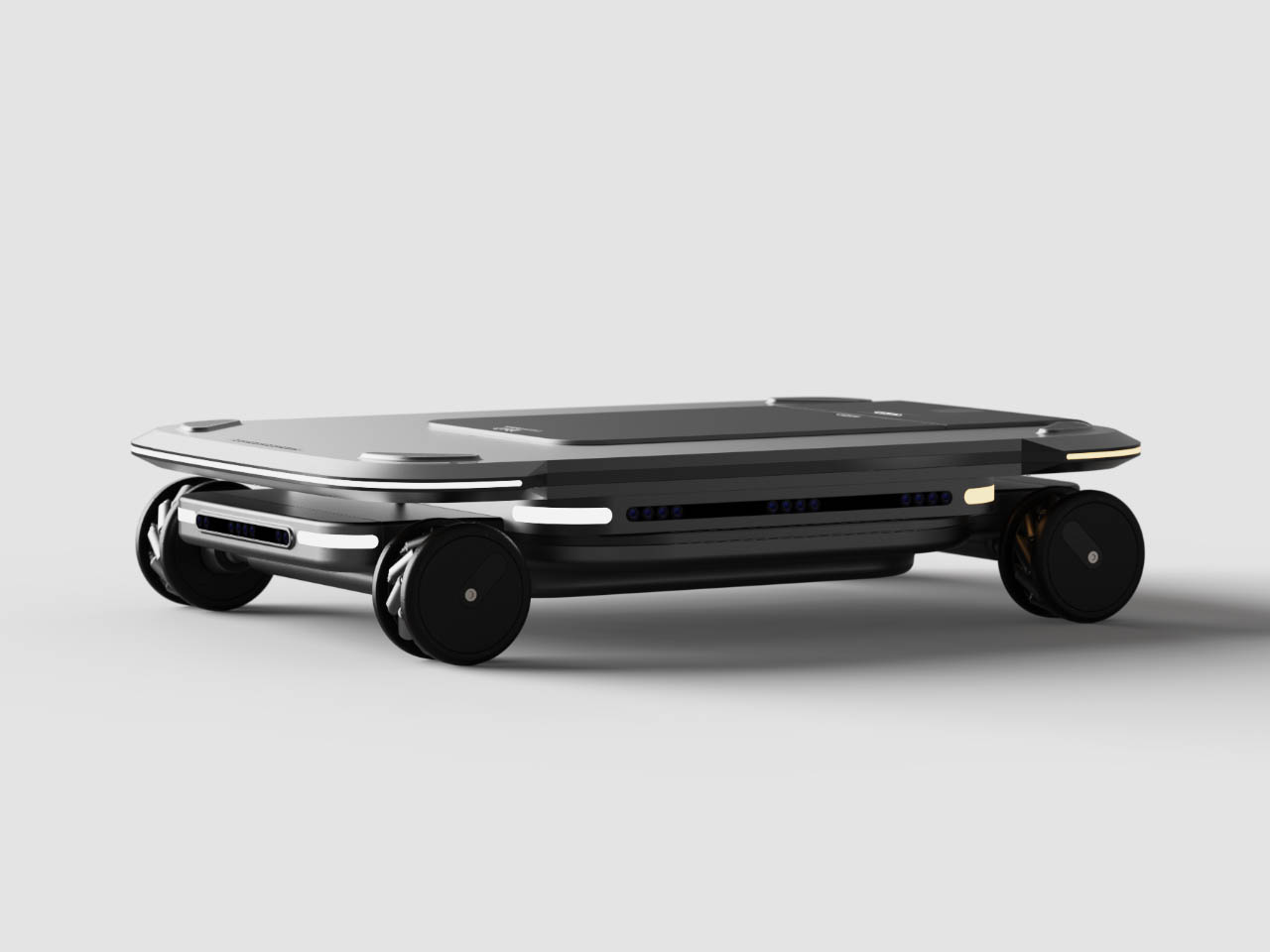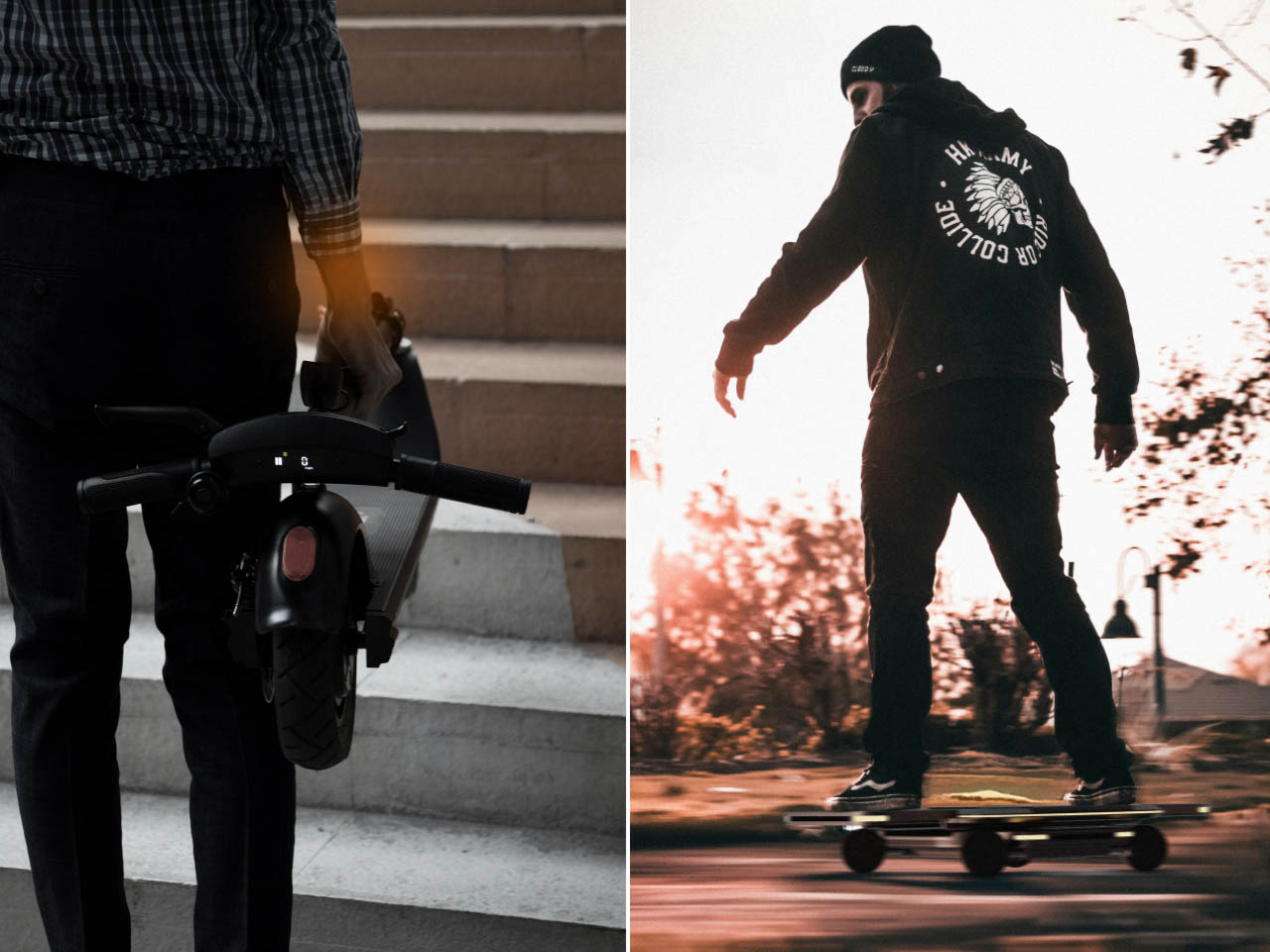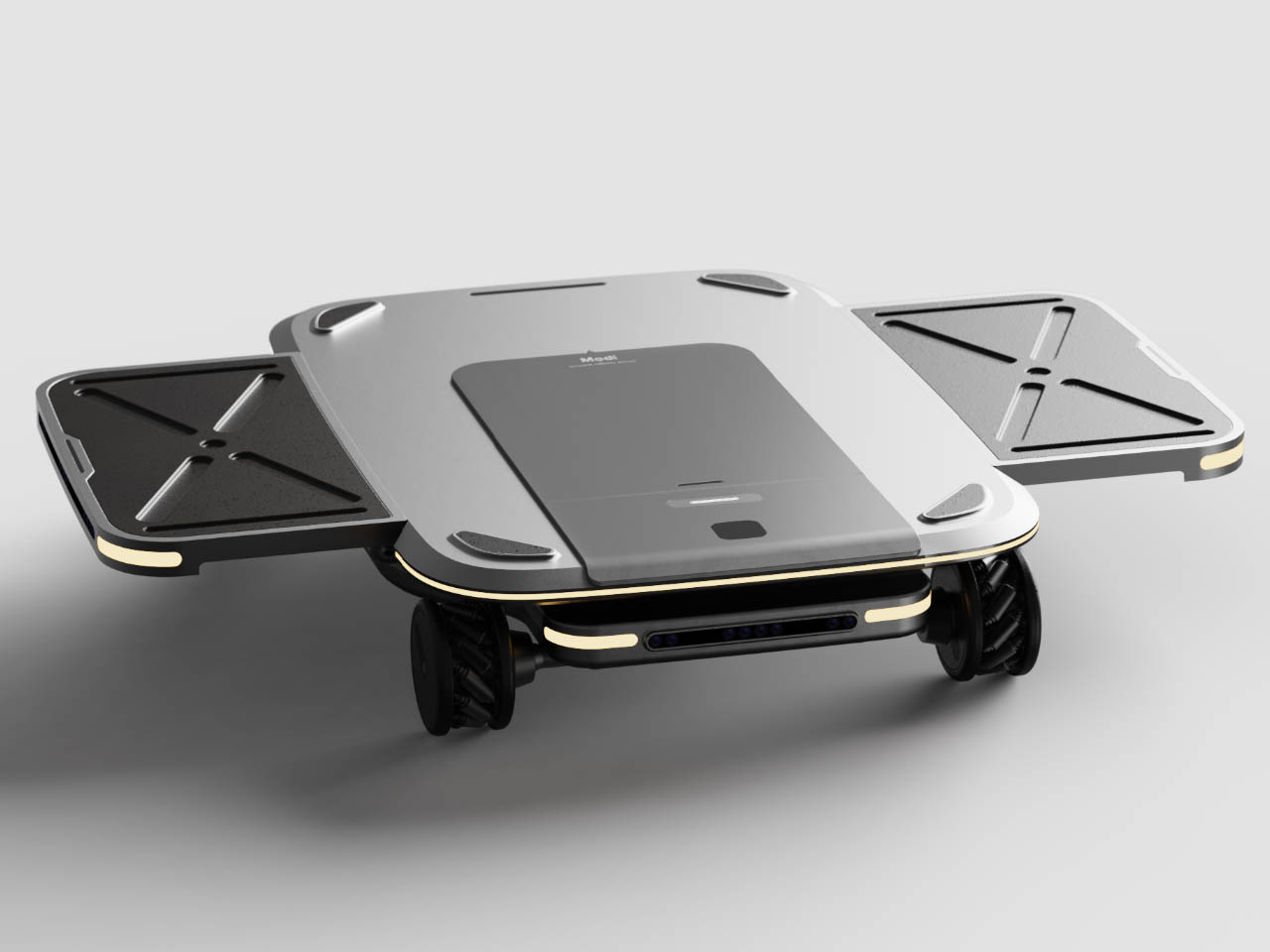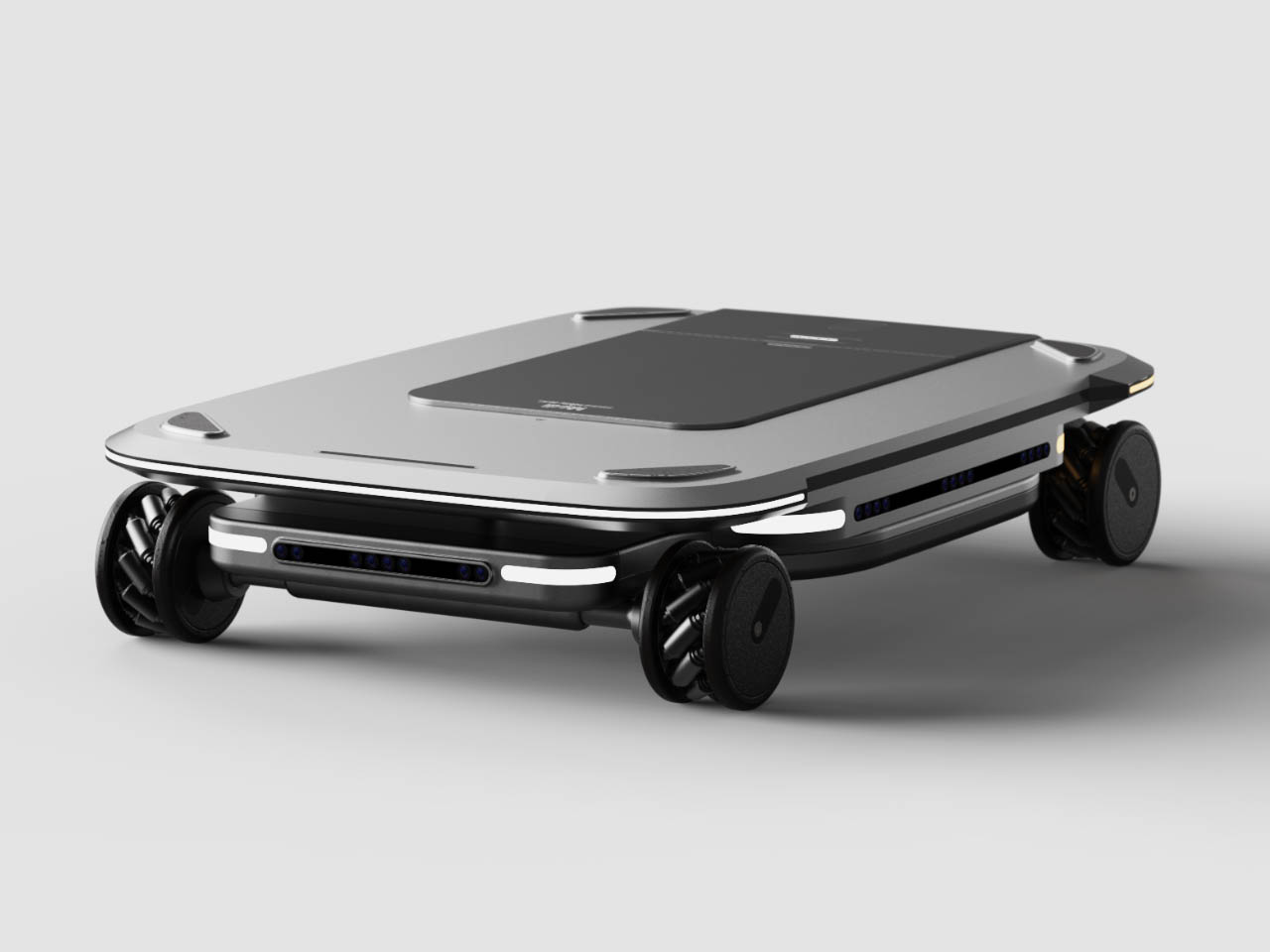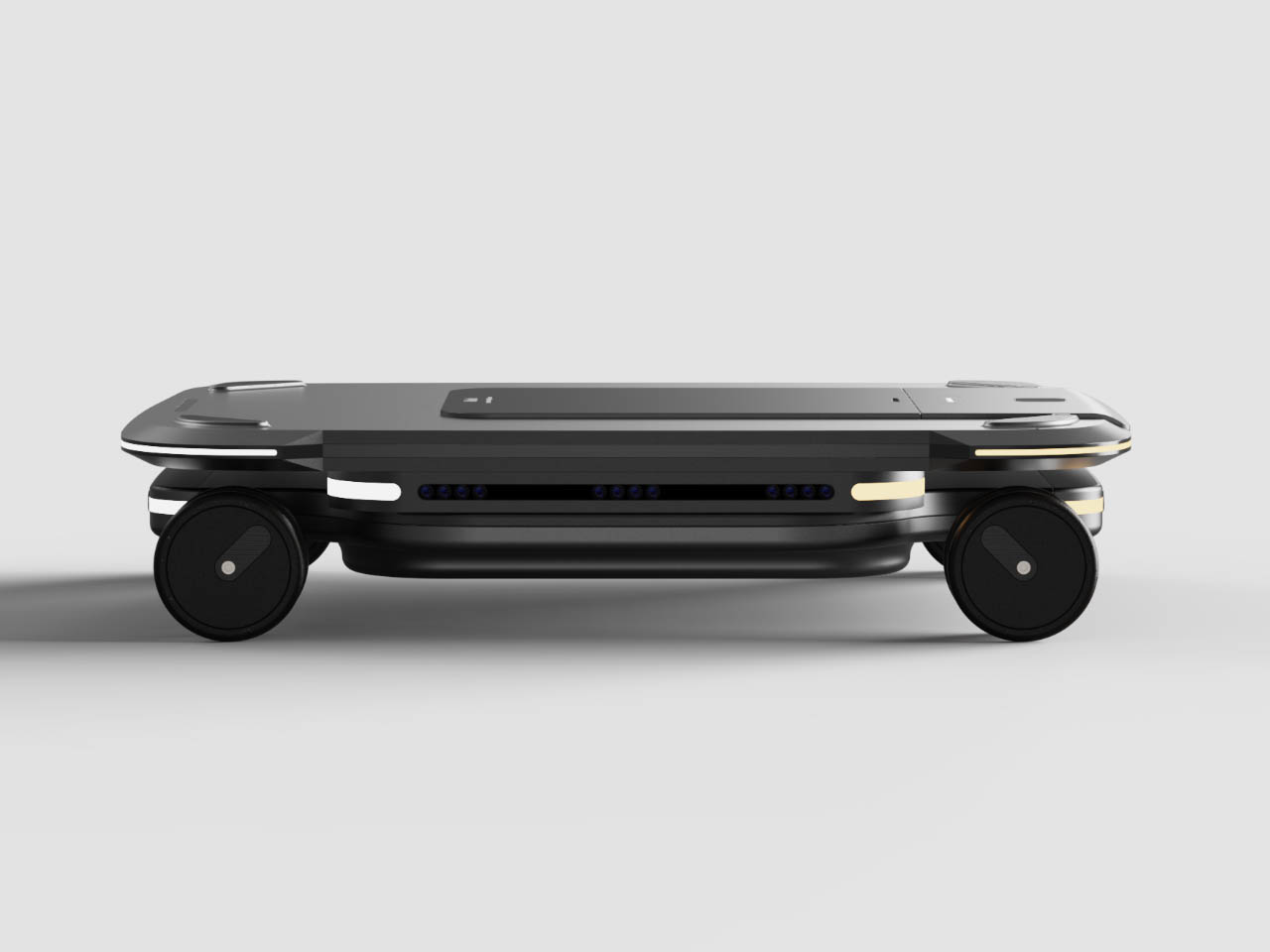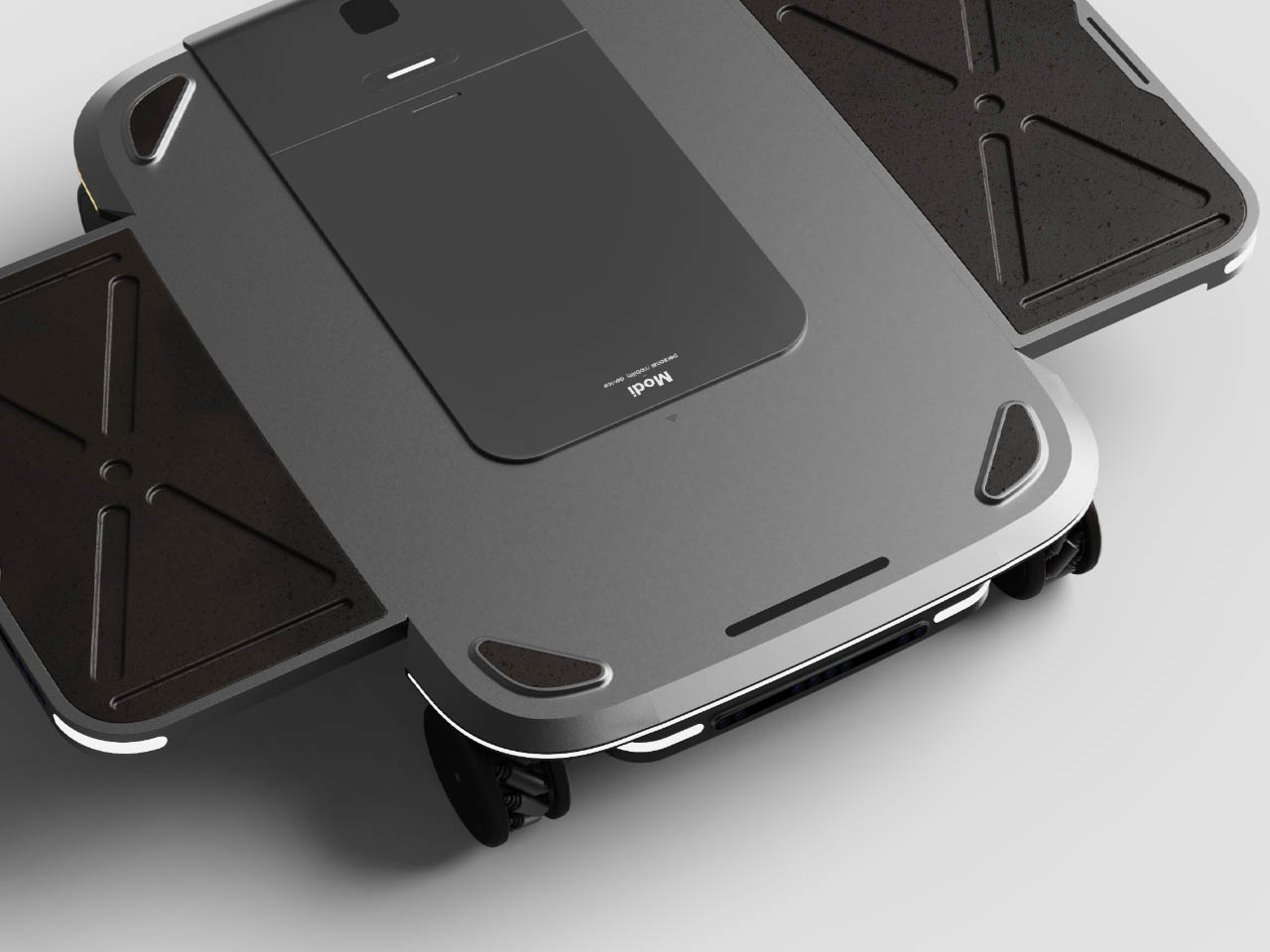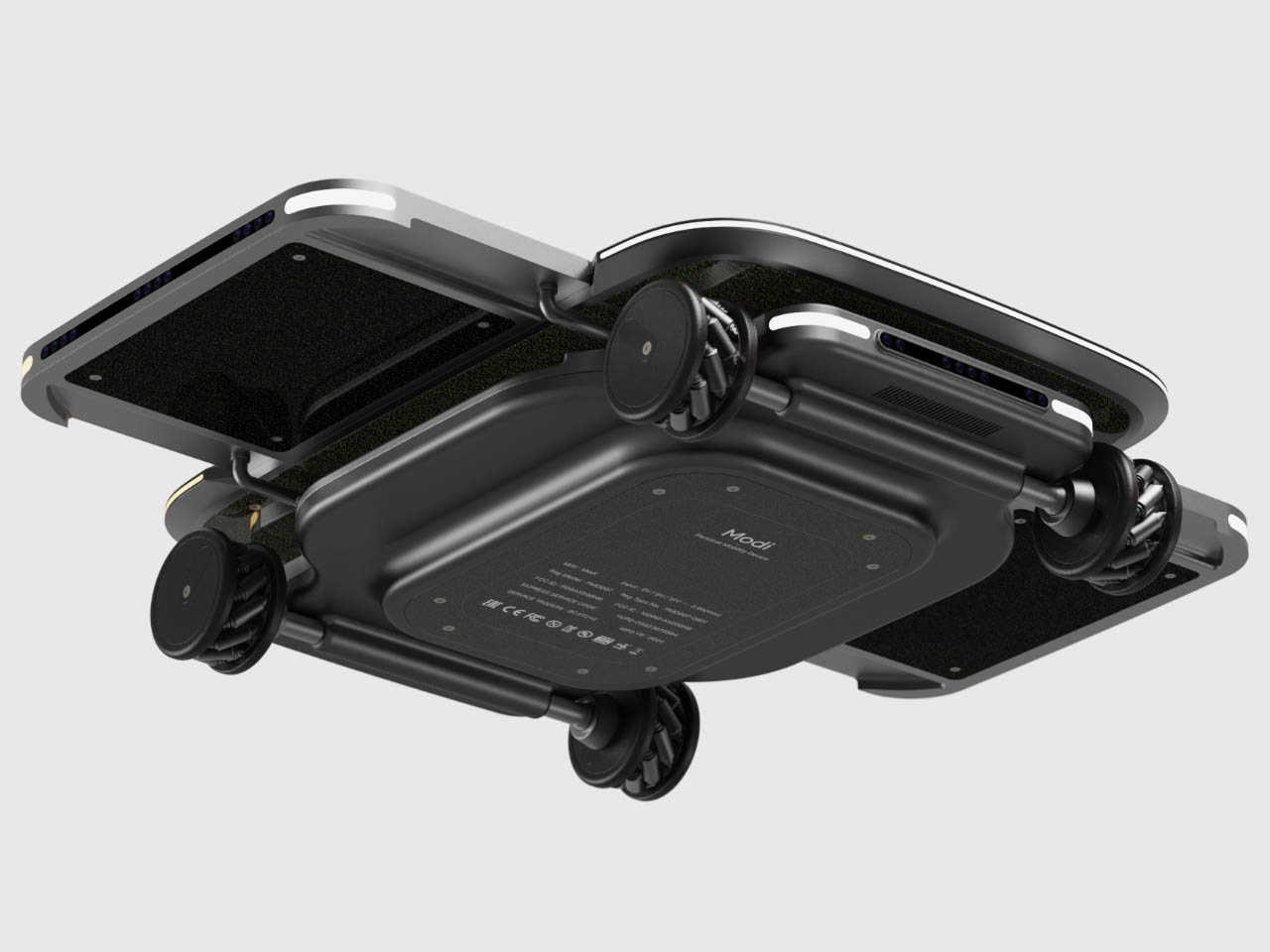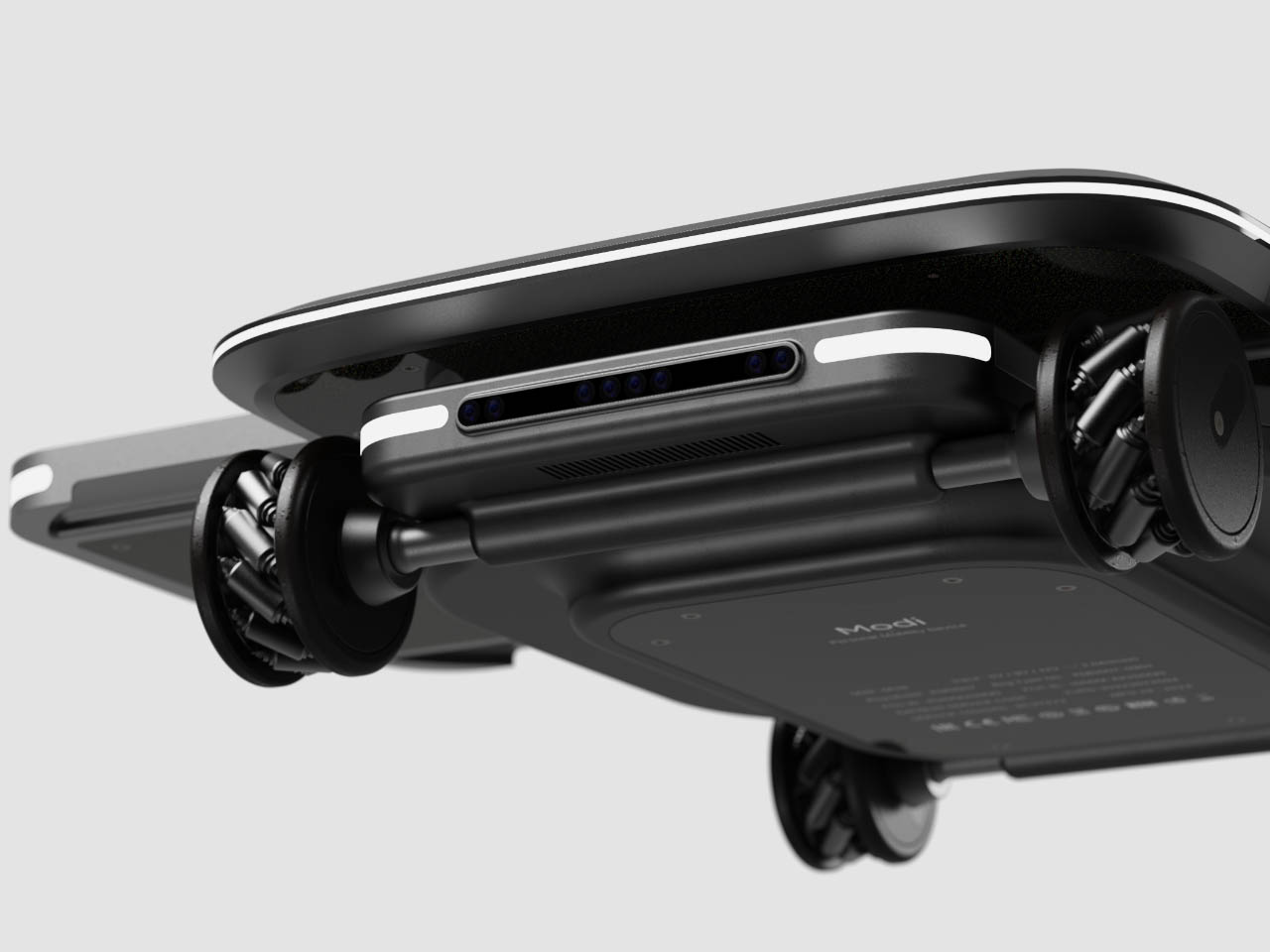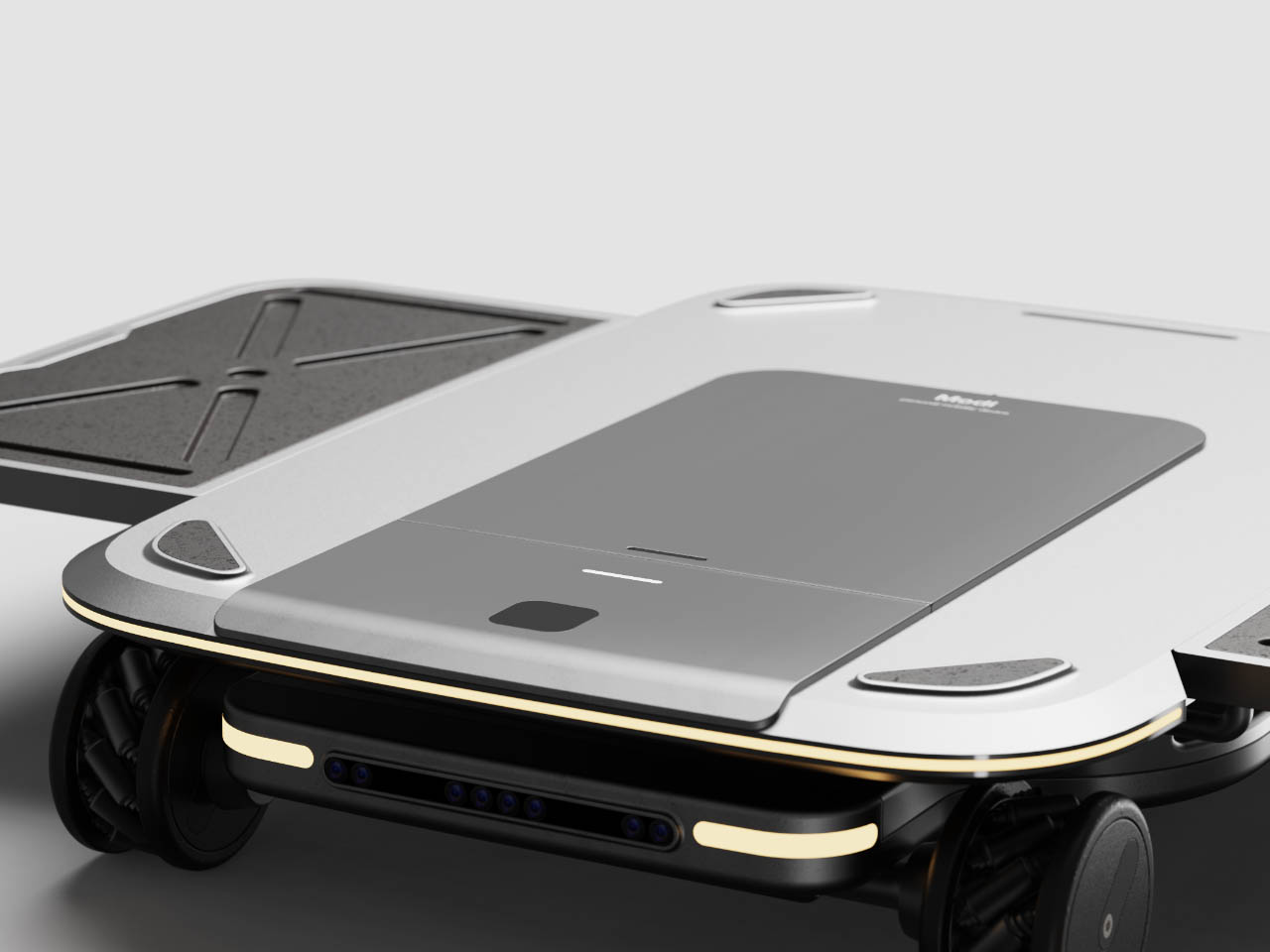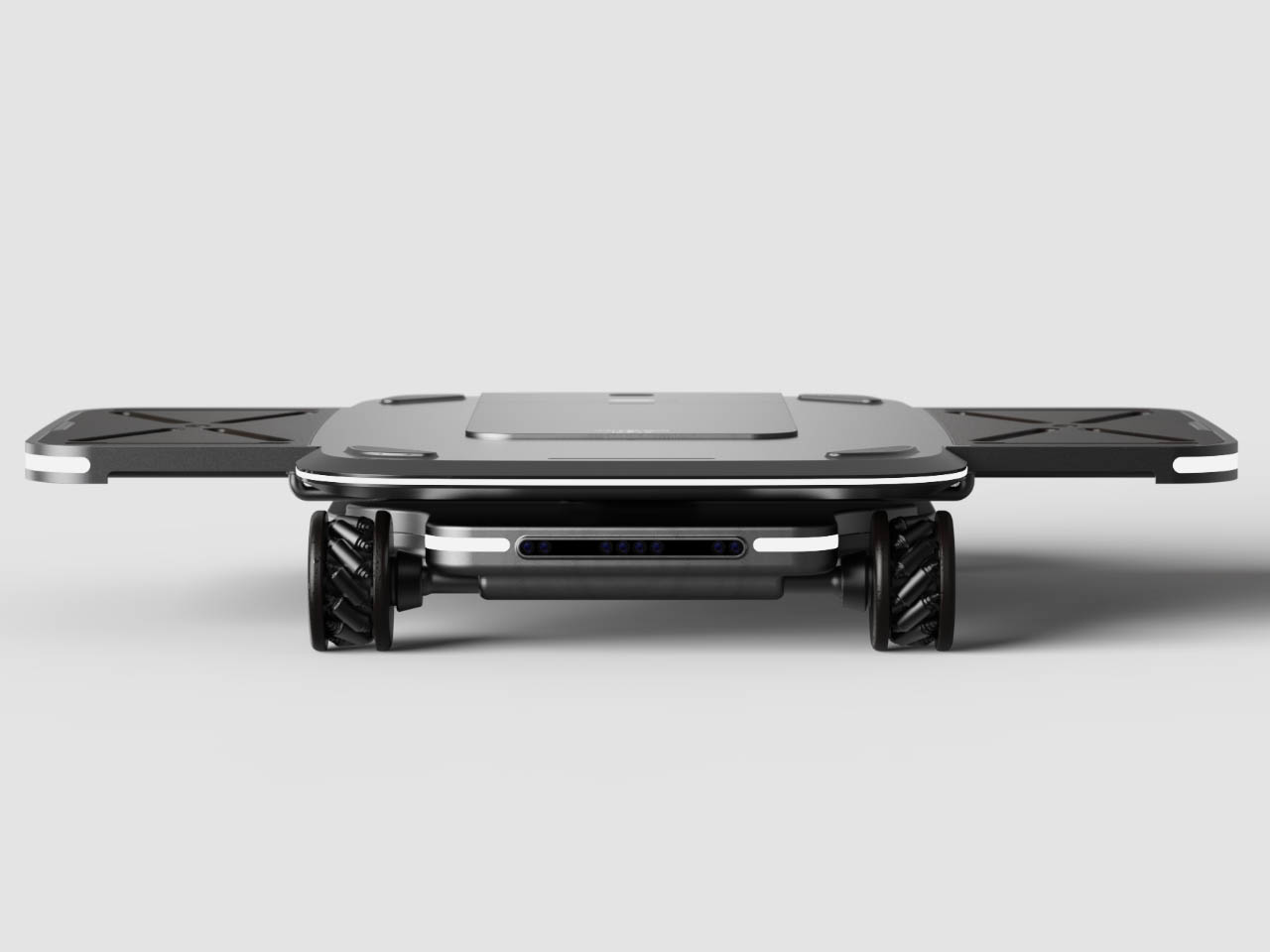
When people say the future of transport is electric, I think there’s a fundamental problem with their vision. Electric cars aren’t the future of mobility, electric transport is. We ditched the internal combustion engine and moved to a simple battery, motor, and wheels setup… so why are we still sticking to cars? They’re expensive, and they’re kind of a waste of space if you’re traveling alone in a 4-seater. The NAO.WHEEL challenges the notion of EVs being the future by presenting something a little more sophisticated. Designed as a monowheel that can be used solo or even joined together as modules, the NAO.WHEEL opens up a possible future where transport isn’t space-consuming. The NAO.WHEEL stands at under 2 feet tall, and just a few inches thick. Step on it, and it uses a gyroscope to balance as it transports you from A to B. Want to travel farther/safer? Two NAO.WHEELs snap together either side by side like a hoverboard, or front and back like an e-scooter, with a platform in the middle for you to stand on, allowing you to intuitively get to places without needing a massive car… and without needing to parallel park ever again.
Designer: Nao.design

The folks at Nao.design like to call the NAO.WHEEL “micro-mobility, macro convenience”. When asked about the Model T, Henry Ford famously said that if he asked people what they wanted, they would have asked for ‘faster horses’, because imagining a car in a horse-driven world wasn’t something regular people could do. The NAO.WHEEL is the exact same thing, but for cars. It challenges the notion that you need a car or motorcycle to get from A to B. You just need wheels that move, and a platform that moves you – something that the NAO.WHEEL condenses to its simplest form.

Sort of like earbuds, the NAO.WHEEL comes in a pair (left and right) but can be used individually. Singularly, the individual wheel has two pedals to stand on, but some may find the monowheel setup a little daunting. This is where the second wheel comes in. The second wheel either snaps to the first, creating a double-wheel that’s a little more stable, offers higher power, better turning, and twice the battery… or snapped to a module along with the first, creating a hoverboard or a scooter (as is visible above).

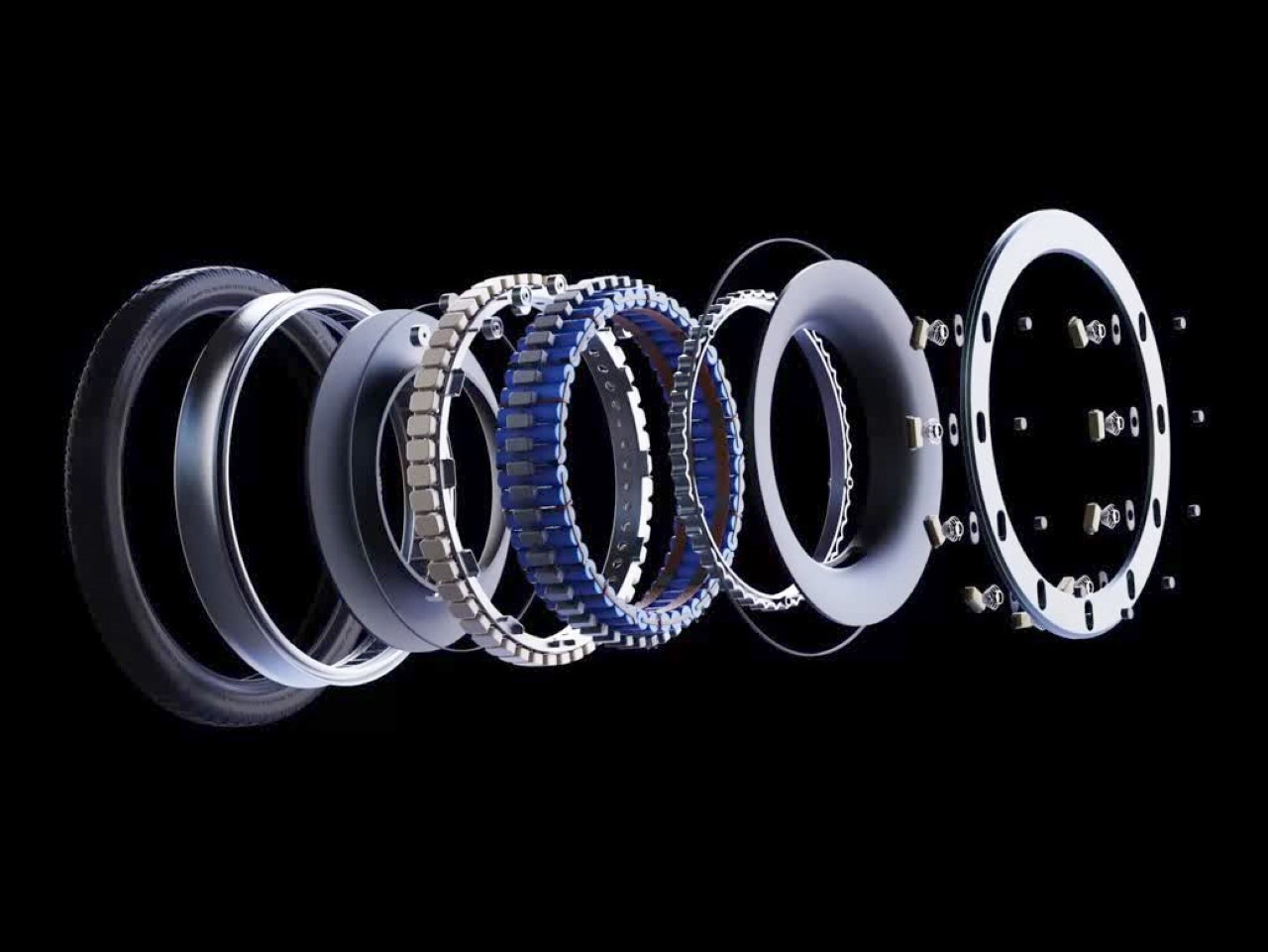
The NAO.WHEEL’s design is markedly different from your average hoverboard, earning it the Red Dot Award for Design Concept. The wheel is entirely hubless, creating a hollow center that really wows you when you look at it. The wheel has batteries built into its inner rim, using multiple cells arrayed in a circle. This helps with weight distribution, while a built-in gyroscope allows the wheel to stand upright while in use without having the dubious balance of a unicycle. Mount the NAO.WHEEL and it’s about as comfortable as a Segway or Hoverboard. There’s a minimal learning curve, and using the vehicle depends entirely on how you lean, allowing you to easily travel on wheels as if you’re cycling or running. And if you plan on traveling at night, don’t worry – the NAO.WHEEL comes equipped with both a headlight as well as a taillight to keep you aware and visible in the dark.


The post Remember Hoverboards? They’re now Hubless, Single-wheeled, and Modular thanks to this Wild Concept first appeared on Yanko Design.
